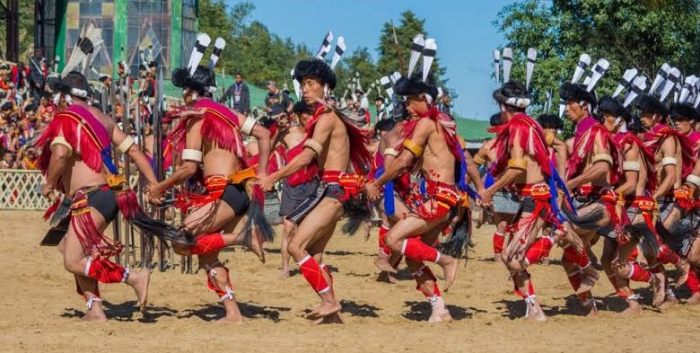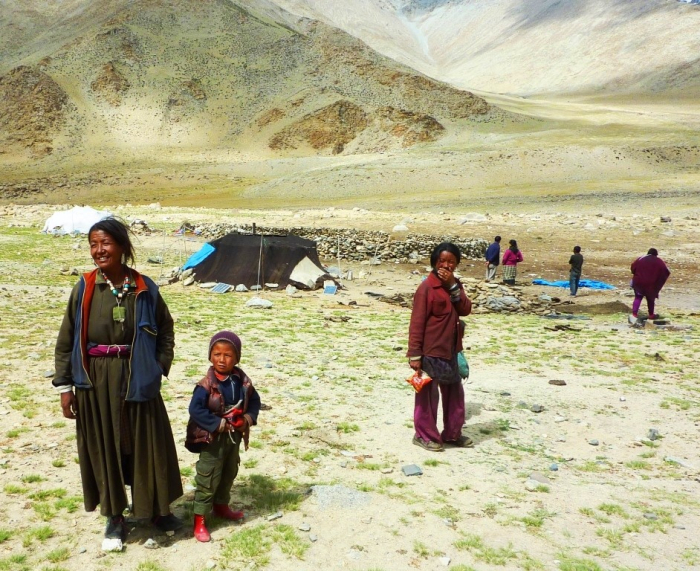

With the change in administration and authority, the socio-economic condition of people changed, but their social status was the same as the caste system was dominant in the medieval age. People in certain caste were obliged to follow certain occupations. The class hierarchy grew further in the Delhi sultanate and during the Mughal empire. The section of society which did not follow such social hierarchies was the tribes. They did not follow the caste system and social rituals as prescribed by Brahmans.
They had their own culture and they were not divided into multiple unequal classes. Tribes are a group of people, who are bounded by kinship and linked with a common legendary ancestor. Tribes are considered indigenous as they have been residing here for thousands of years and following the same customs and livelihood. Many tribes practised agriculture for their livelihood; some were hunter-gatherers and often did both agriculture and hunting jointly.
Some tribes settled on their lands and practised agriculture and had cattle. Other tubes were nomads, who moved from one place to another and they were generally associated with trade, for example- Banjaras. The tribal populations generally resided in hilly areas and forests, they had their customs and laws but both tribal and general masses were dependent on each other for various needs.
Tribals can be simply defined as a group of families who are bound together by kinship and shares an old ancestry. They are indigenous to the area and live in small selfsustaining communities. Tribals generally live in Hilly areas and forests. They follow the occupation of agriculture and hunting. Some tribal communities are traders and nomads.
Tribals were scattered throughout the sub-continent and they even ruled some areas. Punjab was ruled by the Khokhar tribe in the 13th century, later the Gakkhars became dominant. The Gakkhar chief was made a Mansabdar in Akbar’s court. Before the Mughals, Arghuns and Langahs were the dominant tribes in Multan and Sindh area. Another dominant tribe in the Northwest was Baloch, this community is still present. Balochs were a strong community and they were further divided into clans. Gaddis were the shepherd tribe in the western Himalayas. In the northeastern region of India, the Nagas, Ahoms and many other tribes were dominant.

Naga Tribe
Zubanthung, CC BY-SA 4.0
Chero Chiefdoms emerged in the 12th century in present-day Bihar. Cheros came with conflict with the Mughals and during the time of Akbar, they were defeated by Raja Mansingh in 1591, and a heavy sum was taken from them. In Aurangzeb's time, they also had conflicts and many Chero fortresses were captured by the Mughals. Santhals and Mundas were other dominant tribes living in these areas.
In Maharashtra and Karnataka, Kolis, Berads and numerous tribes were found. There have been many conflicts between Rajput rulers and Tribes, for example, Rajputs had fought with Bhils and Gondas. Bhils were Hunters and they were reluctant toward Rajput suzerainty. This conflict happed for a short period in the 16th century and later the tribals accepted the Rajput sovereignty and they were left alone in their areas. Rajputs and the tribals fought together against the Muslim invaders.
Most of tribal were occupied with Agriculture and Hunting. They lived in deep forests and hills and had less contact with the outside world. That is the reason they often came into conflicts with non-tribal people. They did not accept the rule of any king and they had their own set of values, laws and customs. They lived in a self-sustained society, but another type of Tibals was the Nomads. They did not live in one place and they were associated with pastoral activity and Trade. The most famous nomads were the Banjaras, who moved from place to place for trade.
Nomads were generally associated with pastoral trade. They moved long distances with their animals and sold dairy and animal-based products in exchange for grins, clothes and utensils. They did not settle in one place. Same as Nomad tribes the travelling groups of craftsperson, entertainers and peddlers moved along with them.
The Banjaras were the most famous and dominant Nomad Tribes of Medieval India. They move with their Caravan which was called Tanda. Sultan Alauddin Khalji used them to transport grains to the city market and in Jhangir's time, they were assigned the duty to supply food grains to the Mughal army in the military campaigns.
Many pastoral tribes sold animals such as horses and cattle to prosperous peoples. they often sold the animal products like wool. Different castes of peddlers moved from village to village, selling ropes, straw mats, reeds and coarse sacks.

Nomads
John Hill, CC BY-SA 4.0
Tribes are the oldest community in the world. It is the extended form of family and it is invariably endogamous. In India, Tribals are the indigenous people. During the medieval kingdoms, the consolidation of empires started and many big empires were formed. Many towns and cities also emerged. The expansion of empires led to conflict between Tribes and Kings, as they were reluctant to accept the sovereignty of the new empires so, throughout history, small conflicts between the tribes and kings can be seen. Tribes were of two types one who settled in deep forests or on hills and another who were nomads. Nomads used to seel pastoral products across the country and kept moving. Although the Tribes kept their distance from the general mass yet they played a major role in the trade and the economy of the state.
Q1. What was the main occupation of tribes in India?
Ans. Tribes in India were mostly pastoral. They used to do agriculture in forest clearings and had cattle. Some tribes like bhils, were Hunter and gatherers.
Q2. How nomads were different from other tribes?
Ans. Nomads were different from the others because they did not settle in one place. They did not live in deep forests. Nomads were traders and they sometimes worked for the kings.
Q3. How the Banjaras were important to the economy?
Ans. The Bnjaras plate an important role in the economy. They transported food grains to the towns. They also worked for the Mughals, as they supplied the food grains to the Mughal army during conflict.
Q4. What were the basic features of tribal society?
Ans. The basic features of tribal societies were −
They did not followed the Brahmanical rituals and practices.
No class division.
Members were united by Kinship.
Q5. How do Rajputs set an example for tribal people?
Ans. Rajput clan became one of the most dominant classes and they had ancestral linkage with tribal clans like Hunas, Chandelas, Chalukyas and other communities.